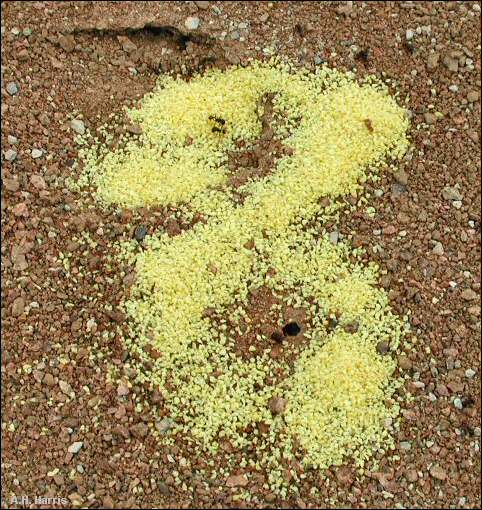

One of the many scientific studies carried out by Charles Darwin—yes, the Darwin of the "Origin of Species" fame—was a study of earthworms. He noticed that newly cleared fields were rocky, but pastures in long use had hardly any rocks at all on the surface. He rightly reasoned that earthworms, bringing their castings to the surface, slowly buried the rocks. And he designed the experiment that showed just that.
The Chihuahuan Desert has few earthworms to churn the soil, but we do
have other animal helpers bringing the subsoil up to the surface. The mounds of pocket
gophers are widely known to desert dwellers, and do a respectable job of it over time.
There's yet another animal, though, that may be even more influential through time:
the lowly ant. We all know that ants are one of the most widely spread groups of
critters in our desert, and certainly anthills are known to us all. Perhaps the
anthills are excavated only a grain at a time, but the desert has plenty of
both—time and ants!

Contributor: Arthur H. Harris, Laboratory for Environmental Biology, Centennial Museum, University of Texas at El Paso.
Desert Diary is a joint production of the Centennial Museum and KTEP National Public Radio at the University of Texas at El Paso.

A newly started anthill. The surface soil was laid down recently over a layer of yellow-grained material, showing very clearly the deeper material that has been brought up from below. Photograph by A.H. Harris.